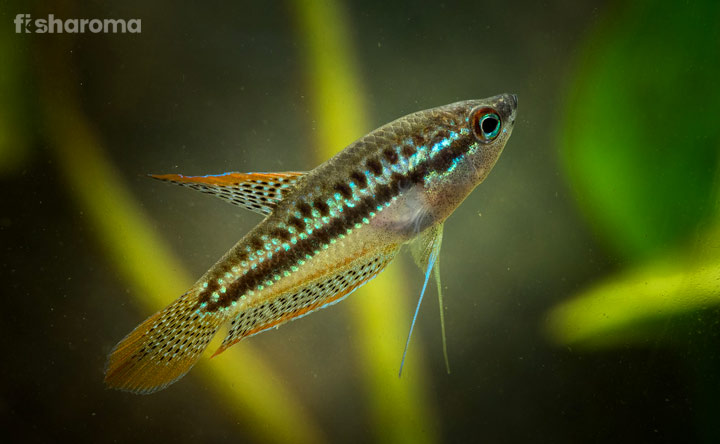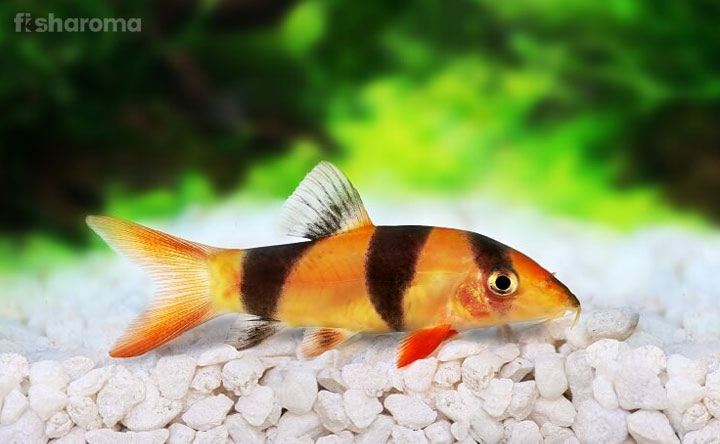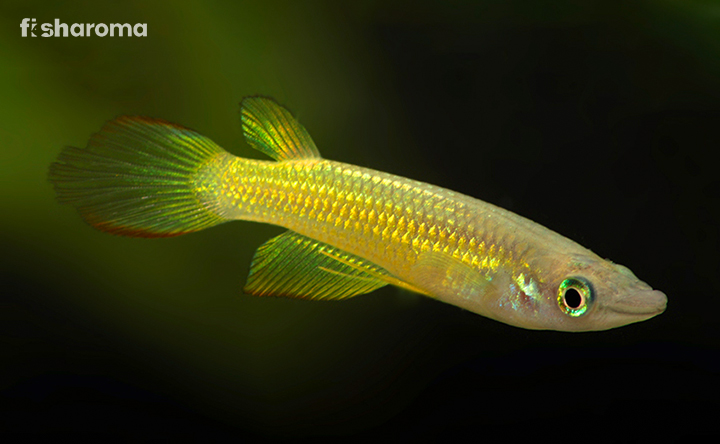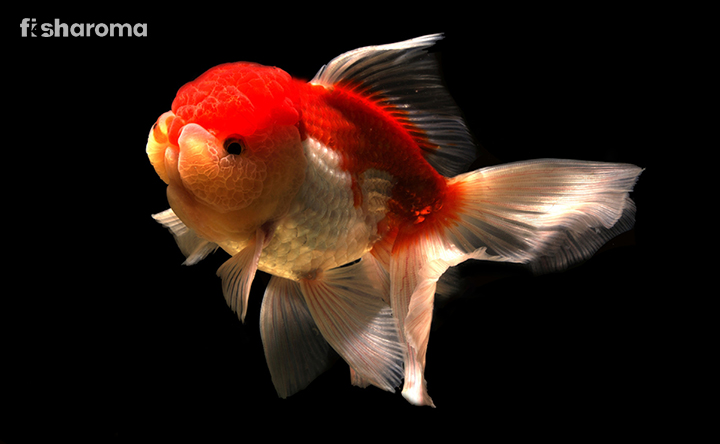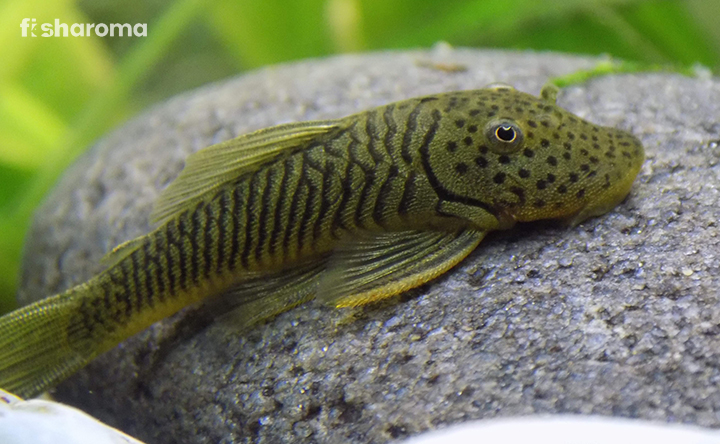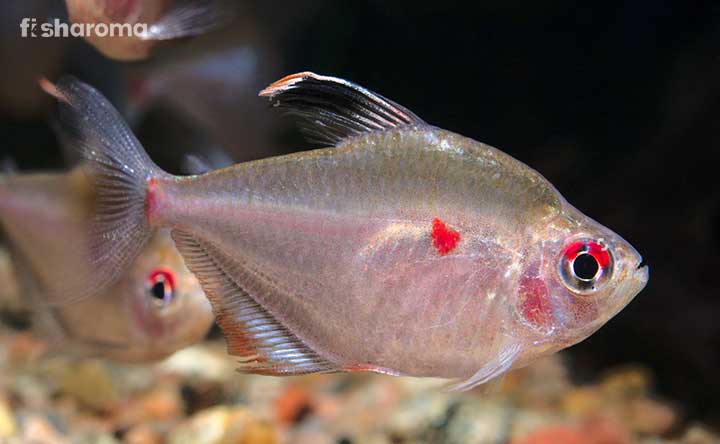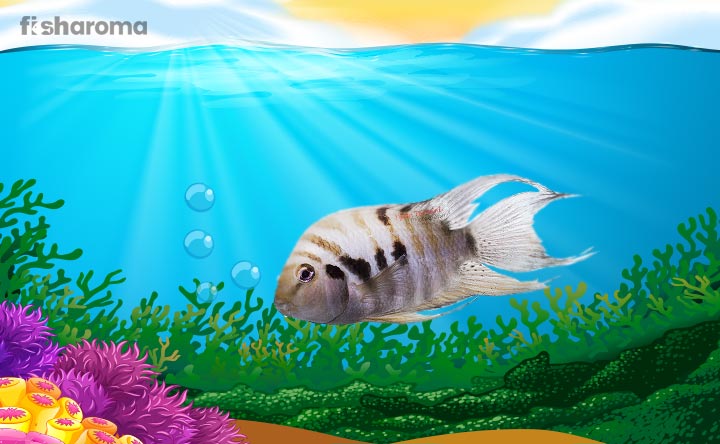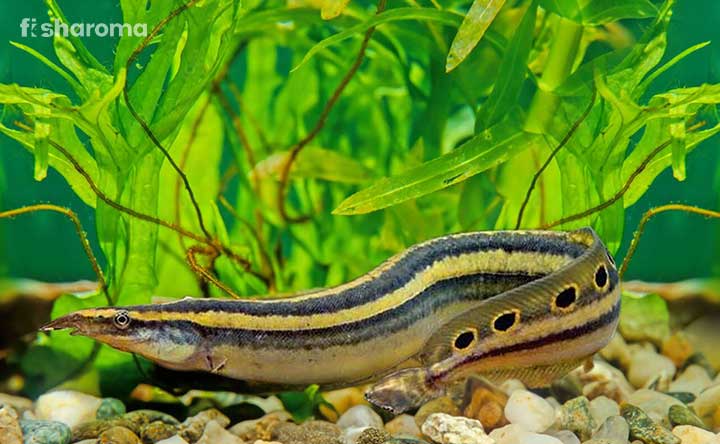Leopard Frog Pleco: A Comprehensive Care Guide To This Charismatic Pleco Species
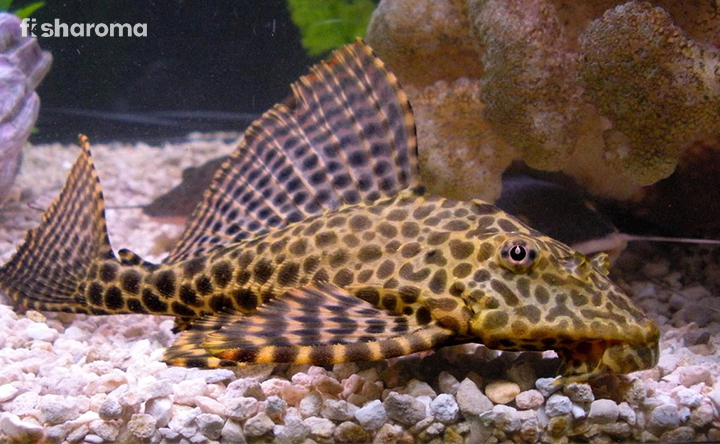
- Origin & Habitat of Leopard Frog Pleco
- Appearance of Leopard Frog Pleco
- Behaviour of Leopard Frog Pleco
- Lifespan of Leopard Frog Pleco
- Diet of Leopard Frog Pleco
- Tank Requirements for Leopard Frog Pleco
- Water Type for Leopard Frog Pleco
- Compatibility of Leopard Frog Pleco
- Breeding of Leopard Frog Pleco
- Diseases and Treatment of Leopard Frog Pleco
- Summary
Leopard Frog Pleco is one remarkable fish from the Pleco species. They are a celebrated choice among many aquarists, irrespective of their experience level. These Plecos are very hardy, stunningly beautiful and peaceful in nature. Moreover, unlike other common Pleco species, these fishes are smaller in size which makes them even more famous. They belong to the Actinopterygii class and Siluriformes order.
As the name suggests, Leopard Frog Plecos have a staggering pattern on their skin that resembles the coat of a leopard. Not only are they gorgeous to look at, but these fishes are also known to make great company.
If you are interested in having a Leopard Frog Pleco as your pet, then you’re at the right destination! Here, we will provide you with expert information and guidance on their care guide, diet, behaviour, breeding and other fascinating facts.
So, follow through to know it all!
Key Specifications of Leopard Frog Pleco
Leopard Frog Plecos are extremely gorgeous. If you are really thinking about including them in your family then, the table below gives a brief outline of their primary characteristic traits. Let’s have a look!
| Scientific Name | Peckoltia compta |
| Origin | Amazon basin, Brazil |
| Lifespan | 8-10 years |
| Colour | Yellow stripes on darkly tinted skin |
| Temperament | Peaceful |
| Size | 3.5 -4.3 inches |
| Diet | Omnivore |
| Family | Loricariidae |
| Compatibility | Other similar-sized, mild-mannered fish |
| Tank Size | 30 Gallons |
| Care Level | Easy |
| Water Temperature | 24-30 Degrees Celsius |
| Water Conditions | pH 6.5-7.5 |
| Breeding | Egg-layer |
Overview
Leopard Frog Pleco (Peckoltia compta) is also known by some other names like the Imperial Tiger Plecostomus L-134, Leopard Pleco and Tiger Pleco. This particular type of Plecostomus is a favourite among many fish-enthusiasts. They have a uniquely coloured motif on their coats which makes them even more ecstatic. Leopard Frog Plecos are primarily bottom-dwellers, but you’ll also find them swimming near the top and middle of the tank. They are quite hardy, resistant to diseases and thrive in warm freshwater areas.
They prefer to swim through slow water currents. Due to their small size and easy temperament, many beginner aquarists love the idea of having them as their pets.
Although they are sturdy, they do require sufficient care and maintenance. So, here we will talk about all those factors which are necessary for their survival in captivity.
Origin and Habitat of Leopard Frog Pleco
Leopard Frog Plecos are native to the Amazon Basin, covering regions of South America and Brazil. They are also majorly found in Rio Tapajós (Pimental) and Rio Jamanxim, Pará in Brazil.
Leopard Frog Plecos thrive in freshwater in the above-mentioned regions. Although the water current in these regions is high, these fishes swim around in areas of moderate to slow water current. They love to take shelter in caves, crevices and sand.
They thrive the best in warm water and are slightly acidic to neutral pH.
Appearance of Leopard Frog Pleco
Leopard Frog Plecos have eye-catchy patterns on their coats. The stripes on their skin resemble those of a Leopard’s. Hence, the name. We will have a detailed look at their coat pattern in the “colour” section. So, stay with us!
Anatomy
Furthermore, their bodies are built fairly well. The dorsal, pectoral and tail fins are quite prominent. Their dorsal fin is made up of 6-7 dermal rods and 1 barbed ray. Likewise, the anal fin is composed of 5 dermal rods and 1 spiky ray. These fishes contain four rows of huge bone-like plates. These plates confer them with protection.
The heads of Leopard Frog Plecos are comparatively larger in proportion to their elongated and lean bodies. Their eyes are located high on top of their heads. A thin membrane on their eyes controls the amount of light entering the retina.
Suckermouth?
Their mouths act like suctions, helping them to stick to the smooth glass surfaces. This unique shape of their mouth, helps them feed on algae growing on the glass walls.
Dimorphism
The male Leopard Frog Plecos develop odontodes around their pectoral fins and at the rear end of the body. The females, on the other hand, lack odontodes. However, you will notice that the females have a larger mid-section area as they carry the eggs.
Size
Leopard Frog Plecos can grow up to 3.5-4.2 inches in length. They are one of the smallest among the Pleco species. Their size is one prime reason why aquarists love the idea of having these fishes in their aquarium as they can easily fit in any standard-sized tank.
You can expect them to grow to their full length within the first two years of their life. The faster growth rate ensures that their chances of survivability increase.
Colour
Leopard Frog Plecos have a distinctly patterned coat design. The yellow stripes on their dark black skin give out a magnificent look. The stripes get broader towards the rear end of the body.
When the fishes mature and grow old, their colour and stripes tend to turn to a darker hue. Additionally, you may also notice that the stripes have morphed into yellow spots, as they age.
Vibrant colouration is a sign of a healthy fish. So, do pay attention to their colours.
Behaviour of Leopard Frog Pleco
Leopard Frog Plecos are very peaceful and composed in nature. This is the reason why these fishes are so famous among fish-enthusiasts. They have a mild temperament and hence, make great companies. However, if your tank consists of a group of male Leopard Frog Plecos, then you might notice them fighting since the males are territorial in nature and want to assert dominance to establish their own territory.
When they are Territorial
You can avoid territorial fights by making sure that you keep your Leopard Frog Plecos in a spacious tank, giving them enough space to swim. Although these fishes may act aggressively towards their own kind, they are very calm towards other species of fishes. In spite of the fact that these fishes are pacific, they actually love to socialise with other smaller fishes who are equally calm and don’t cause any trouble.
Are they Shy?
As Leopard Frog Plecos are shy creatures, they do spend most of their time hiding out. However, they equally find fun in exploring around, sometimes socializing and meeting and playing with new friends.
When are they the most Active?
Furthermore, in the wild, Leopard Frog Plecos are nocturnal. They show the maximum movement during the night. However, in captivity, when the fishes get accustomed to the new environment, you’ll often find them coming out of their caves and swimming around during the daytime.
Lifespan of Leopard Frog Pleco
A Leopard Frog Pleco can live up to 8-10 long years!! If you properly take care of them, look after their needs and maintain the proper tank conditions, then they can even survive for more than 10 years.
Isn’t that amazing? You’ll have a friend for a really long time!
Diet of Leopard Frog Pleco
Leopard Frog Plecos follow an omnivorous diet and so, it’s quite easy to provide for their food. Although many believe that they extensively eat algae, that’s not certainly true. Yes, these fishes do love to nibble on it, but their diet isn’t entirely restricted to that.
Since they are omnivores, you need to sustain them with a good quantity of protein, fibre and essential vitamins.
Vegetarian Diet includes:
- Algae
- Cucumbers
- Zucchini
- Lettuce
- Spinach
- Shelled peas
- Broccoli
Commercially Available Fish Food:
- Algae Tablets and wafers
- Supplemented Vitamins
- Fish food with high protein content
- Fish Pellets and Flakes
They Also Feed on Macroinvertebrates:
- Bloodworms
- Frozen Brine shrimps
- Tubifex
Tank Requirements of Leopard Frog Pleco
Leopard Frog Plecos require assiduous care and maintenance. You should pay keen attention to their needs, tank requirements and lifestyle. Here we will help you out with easy yet expert guidance on these gorgeous species of fishes. Get detailed guidance on setting up a fish tank.
Tank Size
You should get your Leopard Frog Pleco a minimum tank size of 30 Gallons. These fishes are quite small in size and so, would easily fit in a 30 Gallons tank. However, we always recommend a tank that is a bit bigger than 30 Gallons.
As we have seen before, if you have more than one male Leopard Frog Pleco in your tank, then you should consider getting them a larger space to swim around. This will prevent any sort of attack and the fishes can stay content within their own territories. You should choose the perfect fish tank for your pet fish.
Tank Shape
Leopard Frog Plecos are bottom-dwellers. So, you should definitely get them a rectangular shaped tank. This tank shape will give them adequate space to swim around, explore and relax.
Although these fishes are bottom-dwellers, you shouldn’t expect them to always stay near the bottom of the tank. You will also notice them swimming around near the top and the middle of the tank.
Tank Lid
Tank Lids are one necessary addition to your aquarium. You should make sure that your fish is protected from all the foreign harmful substances and dust particles. Additionally, if you have pet dogs or cats at your home, then it is highly recommended that you get a tank lid and prevent any sort of accident.
You need to make sure that the tank lid is tightly closed.
Substrate
As Leopard Frog Plecos are bottom-dwellers, soft sand or gravel will just do fine as substrate material. The sand substrate mimics their natural habitat. The Plecos graze at the bottom of the fish tank and find great comfort in sandy substrate. Additionally, it has also been noted that ingestion of sand helps them with better digestion.
Filter
For your Leopard Frog Pleco, you must consider getting the best aquarium filter techniques. These filters not only clean out all the wastes and toxins within the tank but also purify the air and improve the oxygenation and ventilation within the tank.
Leopard Frog Plecos may get prone to bacterial and parasitic diseases so, it’s an absolute necessity that you install a good and decently ranged filter inside your tank.
Ornaments
Since Leopard Frog Plecos spend most of their time near the bottom of the tank and are shy, you should take the right measures to make them feel at home. You can add soft rocks, caves and driftwoods.
The Plecos will find comfort in the tank and can easily retire to their hiding places when they feel stressed, threatened or want some space of their own.
Lighting
As we have seen before, Leopard Frog Plecos are bottom dwellers and so they are naturally habituated to regions with low light. Inside your aquarium, try to maintain moderate to low light.
You can keep the aquarium light on for around 8 hours daily.
Presence of Flora
If you really want to decorate your aquarium with plants then, rest assured that Leopard Frog Plecos are quite plant-friendly and they won’t destroy or uproot your plants.
You can add Java Fern which has large leaves. These leaves will confer them with a feeling of protection and also provide your fish shade from hard light. Besides this, you should also include floating plants like Hornwort or Cabomba, in your tank. They also help lower the light intensity.
Cleaning Method
Make sure that you install a strong filtration system. The filters are extremely important as they purify the water, remove wastes and debris and also allow healthy ventilation inside the tank.
Also, ensure that you are at least changing 10% of the tank water once a week. Additionally, clean the inside of the aquarium glass/acrylic walls to remove dirt and algae.
You should also use an aquarium vacuum cleaner for clearing out stuck waste materials and food particles within the substrate layers. You need to make sure that your tank stays clear of toxin buildup and decomposing material.
Make sure that you are taking the right measures for cleaning your fish tank.
Water Types for Leopard Frog Pleco
When it comes to Leopard Frog Plecos, then it’s a must that you pay keen attention to the tank water conditions. These fishes are quite sensitive to even slight, undesirable alterations in water parameters. Additionally, make sure that you fully cycle the aquarium before introducing your Pleco to the tank. So, let’s have a look at the requirements.
Water Temperature
Leopard Frog Plecos thrive the best at a water temperature between 24-30 Degrees Celsius. In the wild, these fishes live in warm waters. So, in captivity, you should maintain a high water temperature.
Use the best heater and aquarium thermometer to maintain, regulate and check your aquarium temperature.
pH Level
Leopard Frog Plecos thrive the best at a water pH between 6.5- and 7.5. They require slightly acidic to neutral pH for their survival. A pH above 7.5 should be strictly avoided. So, you must maintain the proper pH level inside the tank.
Hardness
For a Leopard Frog Pleco, you need to make sure that the water hardness lies anywhere between 6 to 10 dKH.
Water Flow Rate
Leopard Frog Plecos love to swim in still moving water which has a measured flow rate. So, you can install a pump inside your tank to maintain the flow rate of water.
Compatibility of Leopard Frog Pleco
Leopard Frog Plecos are very calm and composed. Although they are shy, they won’t mind welcoming new members to their tanks and being friends with them. However, you need to make sure that you introduce similar-sized and equally peaceful fishes to your Pleco tank.
As we have already seen before, male Leopard Frog Plecos are territorial. There are high chances that a group of male Plecos will start a fight to define their own territories. So, they always need enough space to stay happy within their own area of dominance.
Suitable Tank Mates
- Cockatoo Cichlid
- Honey Gourami
- Ember Tetra
- Cardinal Tetra
- Pearl Gourami
- Dwarf Gourami
- Bristlenose Pleco
- Platy Fish
- Neon Tetra
- Guppies
Unsuitable Tank Mates
Any large semi-aggressive/aggressive freshwater aquarium fishes
- Arowana (Silver and Asian)
- African Cichlids
- Oscar Fish
- Rainbow Shark
- Red-Tailed Shark
- Flowerhorn
Breeding of Leopard Frog Pleco
Leopard Frog Plecos are egg layers and cave spawners. They do easily breed in captivity. However, during breeding, you need to pay attention to several factors. First, since they are cave spawners, you should decorate your tank with plenty of caves and hide-out places. Additionally, you should perform frequent water changes, adding cooler water to the tank.
During the mating season, the male Leopard Frog Plecos trap the females in a cave that they choose. The females remain trapped there until they lay the eggs inside the cave. After the eggs are fertilized, the males dutifully look after the eggs and protect them. Within a week, the eggs hatch. The fries remain inside the cave till the time they mature enough to swim and protect themselves. So by the second week, the young Leopard Frog Plecos start to swim.
It’s recommended that you separate the younger ones to a separate tank and feed them frozen brine shrimps and flakes.
Disease and Treatment of Leopard Frog Pleco
Although Leopard Frog Plecos are quite hardy, there are still chances that they may get affected by certain common freshwater diseases. So, let’s have a look at them.
Ich
Ich is a common freshwater disease. The parasites causing this disease might infect your Leopard Frog Pleco. The noticeable symptoms are small white spots all over the fish’s body and tail, loss of appetite and lethargy.
To treat the disease, you must first separate the infected fish into a separate tank. Then, you should thoroughly clean the tank by changing the water at regular intervals and cleaning the substrates of all the debris and waste particles. Make sure that you install a proper filtration mechanism.
Consult a vet if the problem persists.
Dropsy, Fin and Tail Rot
These are caused by certain bacteria which might infect your Leopard Frog Pleco. These types of diseases are primarily caused by poor tank and water conditions. The symptoms include your fish noticeably losing the colouration on its body.
For treatment, make sure that you clean the tank regularly and change at least 25% water on alternate days.
Consult the vet if the problems take a serious turn.
Pop-Eye and Head Holes
These sorts of diseases will result in the protrusion of your fish’s eye. Additionally, you’ll observe cavities on the head of the fish. These diseases are caused by bacteria as well.
Treatments include cleaning the tank and water frequently. Vitamin supplements and tetracycline medication can also cure the disease. Nevertheless, always consult your vet if the problem persists.
Fungal Disease
A fungal infection among aquarium freshwater fishes is common when the tank isn’t maintained hygienically enough. You’ll notice strange grey and white spots all over the fish’s body.
Consult an expert vet for treatment.
Summary
On a closing note, a Leopard Frog Pleco is an excellent choice if you are really looking forward to having them as one of your family members. They are enchantingly beautiful. Due to their small size, one can easily keep them in any standard-sized tank. This is one reason why many fish-keepers love the idea of having a Leopard Frog Pleco as their pet. It is indeed a very cost-effective option and their care level is also comparatively easy.
Furthermore, the tranquil and serene demeanour of these fishes has gained them many praises and admiration. They have an awe-inspiring colouration on their bodies, which makes them even more lovable and attractive.
Even if you are new to the fish-keeping world, having a Leopard Frog Pleco as your pet will surely enthral you and alleviate your experience as an aquarist.
So, all the best as you go ahead with your decision. Have a great time with your Leopard Pleco!
Similar Care Guides
If this article interests you then, don’t forget to visit our sites for further care guides for different fishes.
- Care Guide for Snowball Pleco: These Pleco species are a treat to the eyes. Not only are they very calm, but they are also equally beautifully designed with polka-dotted patterns all over their body.
- Care Guide for Zebra Pleco: These Pleco species have a patterned coat similar to that of a zebra with black and white stripes. They are gorgeous and you would love the idea of adding them to your tank.
- Care Guide for Cory Catfish: Corydoras Catfish also known as “Armoured Catfish”, are popular freshwater aquarium fishes. They are calm and composed and extremely beginner-friendly.

